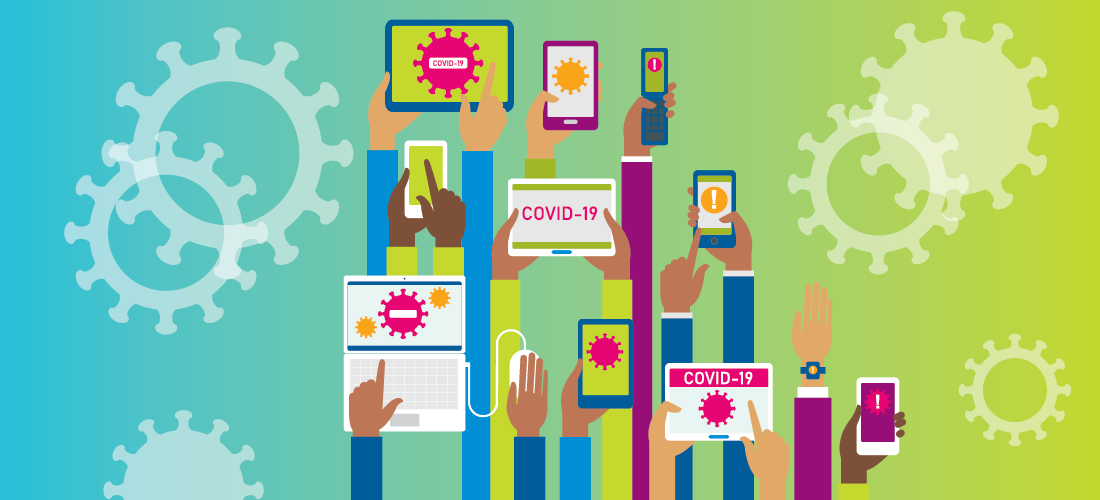I’ve always been a late adopter of new technology. I resisted smartphones for years because I didn’t want to have constant access to email or social media.
Now, if I leave the house without my phone, I feel embarrassingly anxious. Every time Outlook or Facebook changes its user interface, I grumble for about a month about having to click links in new places. But then…I get used to it.
I’m familiar with these tools…so why do I feel so overwhelmed?
Technology is always changing, and we benefit from this in so many ways. For example, as I write this, I have access to any music I want on demand through Spotify (cue the Dvořák cello concerto). I can binge watch any TV show any time (I won’t divulge my TV preferences here). On a more productive front, I can work from home and still collaborate with colleagues and clients all day across the world.
Today, I’m sitting at home, social distancing in the midst of a pandemic. This crisis is affecting us all in different ways. For those like me who can do our jobs remotely (and I feel so fortunate and thankful for the technology that enables this), we find ourselves relying a lot more on technology.
In my “normal” work life, I email all the time. I use WebEx, Zoom, and Skype for video conferencing, and I know how to share my screen on them. I also use Teams to collaborate on documents and chat with colleagues.
So why does this feel so different and so overwhelming? It doesn’t seem like this should be such a big shift. I think it’s the idea of being forced to change my routines and habits that makes it difficult – my lack of agency. And it’s hard.
I have spent countless hours over the last couple weeks reviewing WebEx tutorials, discovering new features in Teams, and learning to use Mural to facilitate interactive meetings virtually. It turns out that many of the systems I’ve relied on for years have helpful features I’ve not been using to their full potential. Who knew that Zoom had fun backgrounds or that the WebEx Training Center could create breakout rooms? (Probably a lot of people. Just not me.)
This is interesting to me because I’m part of Root’s tech adoption team. This is the type of thing we help our clients navigate – how to get people to fully adopt new systems and technology in their work. This means not just using the basic features, but actually realizing the benefits of the technology by using it to its full extent. This almost always requires people to change some of their behaviors and learn new ways of working.
Silver linings: what lessons we can learn?
In the interest of silver linings, what can I learn from all this in relation to helping people adopt new technologies in the workplace? Here are my initial thoughts:
- Make the burning platform and the resulting benefits so obvious that there’s no other logical choice but to learn to use the new technology and adapt how you do things. The burning platform today is pretty obvious: Our business has relied mostly on face-to-face interactions to drive dialogue and change. We need to figure out how to effectively run our business and engage people in change in a new world of social distancing. I’m motivated to change how I work so we can continue to help our clients (and so I still have a job).
- Create a social norm. If everyone is doing something, such as using a new system or sharing data in a new way, it’s hard not to adjust how you do things. I initially resisted using Teams for file-sharing and collaboration with my project partners – remember, I’m a late adopter. I already had a system that worked for me! But when I started working on a project with colleagues who had actively adopted Teams, I had to jump on the bandwagon. After spending a little time learning how to use it, I now benefit immensely from being able to work with my colleagues on the same files, reduce version-control issues, and have some fun in the process.
- Limit alternatives. As humans, we tend to take the path of least resistance. This is an evolutionary benefit that gives us time to focus on other things (we only have so much attention available). If I can’t schedule an in-person working session, but I still need to collaborate with a group, I have to figure out how to use the virtual tools I have available to me. This will help me develop new ways of working going forward as I learn how to use those tools better.
- Positive reinforcement. In today’s environment, I benefit from having a productive, virtual working session by making progress on my projects. I benefit from social connection during a period of isolation by using Teams to have virtual “lunch dates.” I benefit from being recognized by my leaders for leveraging technology to help our clients. These positive reinforcements will make me more aware of the benefits and capabilities of technology in the future and more likely to continue using them as we transition back to more in-person contact.
It’s about the people, not the technology.
For me, this is not just about the technology. It’s about people. It’s about learning. It’s about maintaining both personal and professional connections during a time when it’s very easy to feel isolated. I hope we all learn from this and come out of it stronger and more connected, with some new ways of working and using technology that we can carry forward.






